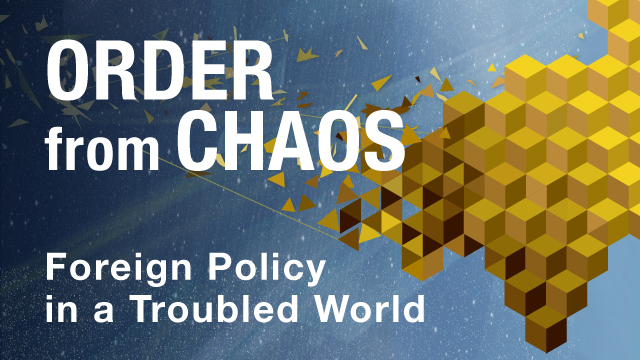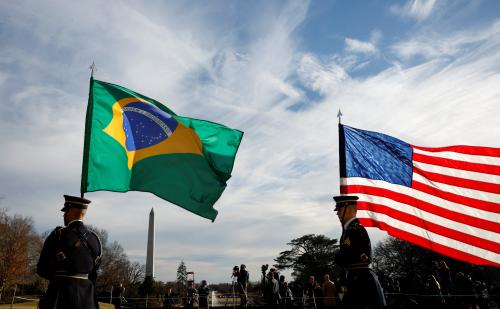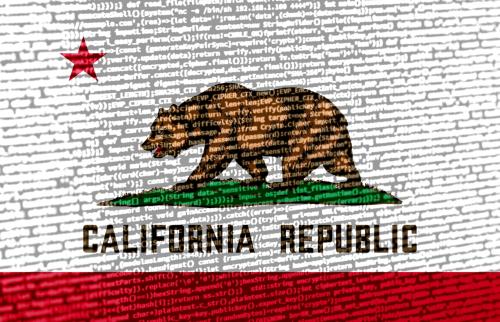Despite a history of pragmatism and warm relations with leaders of different ideological bents, Brazilian President Luiz Inácio Lula da Silva is in some ways the antithesis of U.S. President Donald Trump. Lula is a former metalworker and union leader with a vision of a multipolar world with a seat for Brazil at the table; Trump is a billionaire businessman with an “America First” vision where the United States is the dominant superpower.
Following Trump’s return to the White House earlier this year, many analysts wondered if the two presidents could find common ground. Their previous tenures in office never overlapped, and Trump maintained close ties with Lula’s main political rival, Jair Bolsonaro. On the upside, Lula claimed to have had better relations with former President George W. Bush than with former President Barack Obama, despite closer ideological alignment with the latter. Trump also enjoyed positive relations with Mexico’s leftist former president Andrés Manuel López Obrador—another populist and enduring political figure, not unlike Lula.
From nadir to reconciliation?
Yet, in the first half of 2025, escalating tensions brought U.S.-Brazilian relations to their lowest point in over two centuries of diplomatic engagement. In February, Trump’s network ramped up its criticism of Brazilian Supreme Federal Court Justice Alexandre de Moraes following a temporary suspension of Elon Musk’s platform X (formerly Twitter) in August 2024. The suspension stemmed from X’s refusal to comply with a court order to remove or block accounts accused of spreading misinformation and hate speech and undermining democracy.
In early July, Trump railed against Brazil’s “UNLAWFUL” crackdown on U.S. tech companies and denounced an ongoing investigation into Bolsonaro for an attempted coup in 2022 as a “Witch Hunt.” A subsequent White House executive order imposed a 50% tariff on Brazilian goods, adding a 40% surcharge to the existing 10% duties. The administration cited a range of Brazilian actions, including interference with the U.S. economy, violations of free expression and human rights, erosion of the rule of law, and threats to U.S. interests. Notably, among the countries that were targeted by Washington’s July tariff announcements, Brazil was the only one running a trade surplus with the United States.
The Trump administration then sanctioned Moraes in July 2025 under the Global Magnitsky Human Rights Accountability Act for his role in Bolsonaro’s legal proceedings and perceived violations against U.S. tech companies. The sanctions later expanded to include Moraes’ wife and family business. In response, Lula declared that he had “no relationship” with Trump and obliquely criticized the Trump administration’s actions at the UN General Assembly (UNGA), stating that “our democracy and our sovereignty are non-negotiable.”
Against this backdrop, the Brazilian government braced for retaliation after Bolsonaro was sentenced to 27 years in prison for his attempted coup. Yet after a brief exchange between Lula and Trump on the sidelines of UNGA—which included an embrace—Trump publicly declared he had “excellent chemistry” with the Brazilian leader, calling him “a very nice man.” This breakthrough led to a 30-minute video call on October 6 that both leaders characterized as positive. They have since agreed to meet in person soon. In the meantime, Secretary of State Marco Rubio and Brazilian Foreign Minister Mauro Vieira have begun a more formal dialogue, with trade being discussed as the most immediate concern. But if the truce holds—or even evolves into a pragmatic partnership—ample opportunities for cooperation exist, including in artificial intelligence (AI), a priority area for both leaders.
A mutually beneficial tech partnership
Both Trump and Lula have made the national advancement of AI a central focus of their respective second and third terms in office. In July 2025, the Trump administration released a strategy titled “Winning the Race: America’s AI Action Plan,” outlining over 90 federal policy actions aimed at cementing U.S. dominance in the AI space. The administration has advocated for a “full-stack” U.S. export strategy of AI technology—including chips, software, cloud services, and data centers. This represents a direct response to China’s competitive offerings that bundle hardware with financial incentives and governance frameworks.
Yet, U.S. efforts to export AI technologies to Brazil may face hurdles, as Lula’s administration has staked its reputation on AI sovereignty rather than technological dependence. In fact, one year prior to the Trump administration’s release of its AI action plan, the Lula administration launched its own vision, the National AI Plan 2024-2028. The Brazilian plan includes more than 50 actions designed to promote inclusive development and mobilize Global South countries to become active participants in AI governance negotiations. It also emphasizes Brazil’s “sovereignty and autonomy” by advancing partnerships that transfer technology rather than create dependencies. More broadly, Brazil’s insistence on digital sovereignty stems in part from its skepticism toward U.S. technology governance, which deepened after Edward Snowden revealed in 2013 that the U.S. National Security Agency was spying on world leaders, including Brazil’s then-President Dilma Rousseff.
However, the Brazilian government is also wary of relying too heavily on China, as that would only swap one dependency for another. This creates an opportunity for a pragmatic, transactional U.S. approach that could advance Brazil’s AI sovereignty while reducing Chinese influence in the region. While the Trump administration is unlikely to endorse Brazil’s full AI sovereignty agenda, mutual interests align in several key areas.
For example, Trump’s team has broken from the Biden administration’s more cautious approach and embraced open-source AI models as central to American technological leadership. Open-source—or at least open-weight—models align well with Brazilian objectives. Since 2003, Lula has championed free and open-source software as a means of reducing cost and dependency on foreign technology. U.S. support for these efforts could help Brazil develop and deploy tailored applications to address critical needs in agriculture, education, environmental protection, and other sectors within its own regulatory framework. U.S. stakeholders could also support digital literacy and capacity-building initiatives, particularly for developing smaller, specialized models in areas of mutual interest, like agriculture or health.
Brazil’s AI advantage in energy and minerals
Deepening partnerships with Brazil could also help address some of the fundamental challenges U.S. tech companies face in scaling up their AI ambitions, including the resource demands of compute infrastructure and the precarity of the rare earth material supply chain, due in part to China’s chokehold.
Throughout the early part of the Trump administration, tech companies and investors have forged eye-popping deals to build new data centers, including in the United Arab Emirates (UAE) and around the United States. However, challenges remain despite an explicit mandate from the Trump administration to “Build, Baby, Build!” The partnership with the UAE to build a 10-square-mile AI complex in Abu Dhabi with 5-gigawatt capacity poses a host of national security challenges, and recently, allegations of corruption and delays. Project Stargate, a private partnership with U.S. government backing, plans to invest $500 billion to build five U.S. data centers, with a total planned capacity of nearly 10 gigawatts. Although the project has made some progress, domestic energy supply remains a central challenge.
Brazil, by contrast, gets approximately 90% of its electricity from renewable sources and has sufficient infrastructure to transport it across the country. Brazil is already positioning itself as a critical actor in the quest to build more compute infrastructure, though not without some scrutiny. In 2024, Amazon Web Services committed $1.8 billion to expand its data center footprint in Brazil, and Microsoft announced a $2.7 billion investment for cloud and AI infrastructure.
To spur additional investment and in response to the Trump administration’s tariffs, the Brazilian government announced the “Redata” tax incentive program in September 2025 to attract foreign firms to build data centers. The program offers federal tax incentives for clean energy-powered data center investments in exchange for commitments to R&D, innovation, and national compute capacity. With an abundance of renewable energy and experience working with U.S.-based cloud service providers, Brazil has the potential to become a central actor in efforts to expand AI infrastructure, though it currently represents just a small percentage of the global data center market. However, it will be important for domestic and regional stakeholders to have access to this expanded compute as a way to bolster local innovation and scale technological aspirations.
Brazil also holds one of the world’s largest reserves of rare earth elements, which are crucial for AI infrastructure, including semiconductor production and server cooling systems. Rare earth element processing is currently dominated by China, which has recently begun to restrict exports as a form of pressure in response to American export controls and tariffs. Although the United States has begun to ramp up domestic production, it has also sought supply chains elsewhere—even going so far as to threaten to annex Greenland, which boasts an abundance of rare earth minerals. Further investments in Brazilian mining modernization could help diversify supply chains in an area where U.S. companies are already actively involved, but where China maintains a strategic advantage.
With a potential bilateral meeting between Trump and Lula on the horizon, easing trade tensions will be the priority. Other issues may also take precedence, including regional challenges related to Venezuela and transnational organized crime. However, if a productive partnership can begin to take root, tech collaboration will be an area where both parties may find common ground.
The Brookings Institution is committed to quality, independence, and impact.
We are supported by a diverse array of funders. In line with our values and policies, each Brookings publication represents the sole views of its author(s).








Commentary
An unexpected opening for US-Brazil tech cooperation
A pragmatic, transactional U.S. approach could advance Brazil’s AI sovereignty while reducing Chinese influence in the region.
October 23, 2025